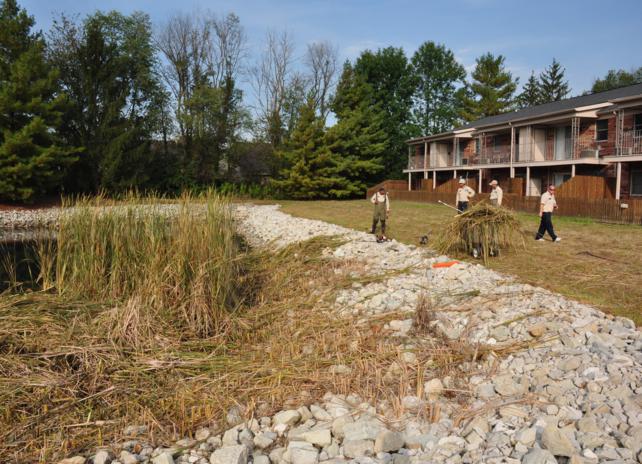How to Remove Cattails Before They Take over Your Pond
Understanding the proper method to remove cattails is essential. Removing cattails is something you should take your time with. For example, it’s a good idea to consult with local authorities or environmental agencies to ensure you follow the appropriate cattail removal guidelines in your area.
Do You Have a Cattail Problem?
I’ve always appreciated cattails. I see them along Eagle Creek on my hikes and appreciate their beauty. Cattails can be very beneficial to many aquatic species as well as birds. However, if you have a small pond or water garden, cattails can be a problem.
“Cattails can be a nuisance species, especially within smaller ponds. As cattails have a large rhizome system capable of rapidly expanding within shallower water depths, they can easily encroach upon a small waterbody. Most cattail species found in North America are native to the area, but their growth can become dense and potentially outcompete other native plants to create a cattail monoculture.” — Kara Sliwoski, aquatic Biologist
How to Remove Cattails
Equipment
You will need a line trimmer or weed whacker with a suitable cutting attachment. Ensure the line trimmer is appropriate for use near water bodies and follow all safety instructions.
Cutting the cattails
Use the line trimmer to cut the cattails off at the water’s surface. This will help remove the above-ground vegetation. Be sure to cut as close to the water surface as possible to prevent regrowth.
Removing cut material
After cutting the cattails, use a rake to gather and remove the cut material from the water. This step is essential to prevent the decayed material from adding excess nutrients to the water, promoting algae growth and other unwanted vegetation.
Herbicide application
Once you have removed the cut material, use an aquatic herbicide to prevent the cattails from spreading further. It’s crucial to use a herbicide specifically labeled for aquatic use and follow the manufacturer’s instructions and safety guidelines. Be cautious not to apply excessive amounts or allow the herbicide to drift onto non-target plants or water sources.
Post-treatment considerations
After applying the herbicide, monitor the treated area regularly to ensure the cattails are not regrowing or spreading. Depending on the effectiveness of the herbicide, you may need to repeat the process or consider alternative control methods if the cattails persist.
Pro Tip: Cattails should be removed with care to minimize any potential negative impact on the surrounding environment. Always be mindful of the possible ecological consequences and seek professional advice if unsure about the best course of action for your situation.

Speaking of professionals, if, after reading this, removing cattails sounds more complicated than you expected, Berger Hargis is your go-to. Our professional team uses a line trimmer to cut the cattails off at the water’s surface. We then rake out the cut material and spray the remaining stalks with an aquatic herbicide to prevent the existing plants from spreading.
How Can We Help You?
Berger Hargis has a company philosophy of providing personal excellence for all our services. Our growth and success have been due entirely to our commitment to honest, excellent customer service. The company has been built on the referral business we have received due to this philosophy.
We work with residential customers and businesses in Central Indiana. Contact Us for a free analysis from one of our trained specialists.
About the Author
Randy Clark is a speaker, coach, and author. He publishes a weekly blog at Randy Clark Leadership.com. Randy is passionate about social media, leadership development, and flower gardening. He’s a beer geek, and on weekends he can be found fronting the Rock & Roll band Under the Radar. He’s the proud father of two educators; he has four amazing grandchildren and a wife who dedicates her time to helping others. Randy is the author of the Amazon bestseller The New Manager’s Workbook, a crash course in effective management.
Photo by Kelly Sikkema on Unsplash
Go Back







